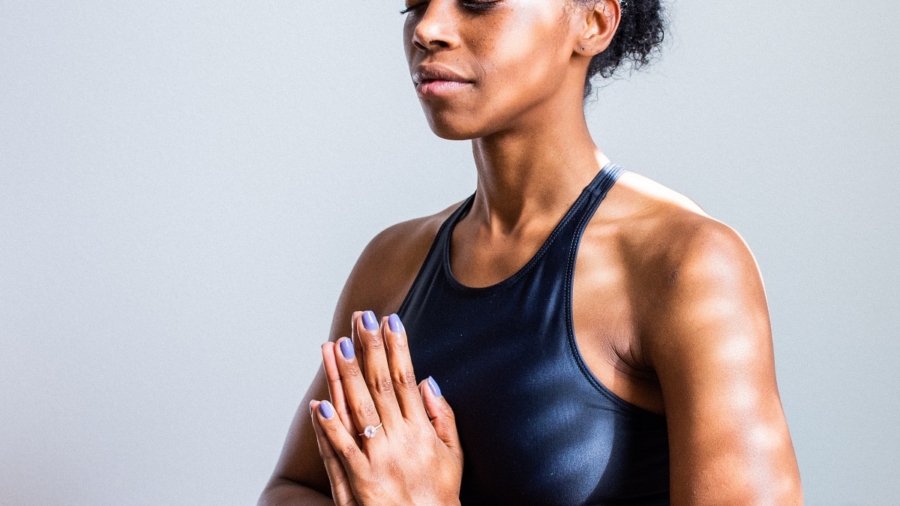Jayita Bhattacharjee details the health benefits of Sudarshan Kriya, a controlled, complete breathing technique for wellbeing.
by Jayita Bhattacharjee
To breathe is to be gifted with life, and in this breath is held life’s enigmatic beauty. Every emotion corresponds to a rhythm of breath. In agitation or tension-fraught situations, you may be inclined to hold your breath. If you are a suffering soul, a long sigh escapes your lips. The rhythm of your breath is an indication of what’s going on in your nervous system. A fine rhythm is an indication of the placidity of your mind.
The Sudarshan Kriya breathing technique is comprised of rhythmic circles of breath, which in turn have a profound positive impact on your mind, body and spirit. What does Sudarshan Kriya denote? Translated from Sanskrit, Su literally translates as ‘proper’ and Darshan as ‘vision’, while Kriya denotes purifying action. All of them comprise to denote the proper envisioning of self through purifying action.
The Sudarshan Kriya breathing technique brings a balance and harmony between the body, mind and emotions, causing an end to conflict. Who do you conflict with? With your raging emotions. This art of breathing is the doorway to elimination of anger, stress, and depression. When the breathing technique carries the negative emotions out, it leaves a body enlivened and a mind centralised. Breath is from where prana, the life-force energy, releases, and this breathing technique heightens prana by chasing out the toxins and stress that have accumulated over time. Sudarshan Kriya practice is cyclically controlled, and is rooted in the traditional yoga that aims to relieve stress. The breath plays a significant role in every sequence of it, uniting the body and mind. This Sudarshan Kriya yogic breathing is a rhythmic, cyclical breathing process with slow, medium and fast cycles, and is taught by the Art of Living Foundation.
Components of Sudarshan Kriya
Ujjayi breathing is a victorious breath, and entails a gentle constriction to the throat which is brought to a diaphragmatic breathing pattern. This way, the flow of udana, the upward-flowing pranic force, is directed. Udana vayu (which can be translated as ‘ascending air’) stands for the prana vayu that directs prana from the lower to upper chakras. Udana governs the throat center, and when udana is out of balance, we are at loss for words, or we engage in overwhelming speech. Expressive speech is governed by this udana vayu. The energy of udana assists us in communication. To bring udana in balance is the prime focus of Ujjayi breathing technique.
How to perform Ujjayi: Ujjayi breathing is a slow breathing technique in which the breath touches the throat. This breath can be practiced by sitting in a comfortable posture, holding the spine neutral. As the aperture of the throat is constricted, a gentle hissing sound is created. The constriction is to be maintained in the throat during both the inhalation and exhalation, so we can take breath in from the diaphragm and not from the chest. Both phases of the breath need to be equally long and smooth, with no pause in between inhalation and exhalation.
As you move your conscious awareness from the navel to the eyebrow center, engage in inhalation, taking a long deep breath, and let your conscious awareness flow out as you exhale from the eyebrow center to the navel center. The awareness of this flow will stimulate udana while collecting the passive pranic force dispersed throughout the body and mind.
This way, it leads from lower to upper levels of consciousness as the dormant energy is awakened through the Sudarshan Kriya Yoga breathing technique. With the balancing of udana, you regain your confidence and assertiveness. Engage yourself in this Ujjayi breathing pattern till you are comfortable, then let your throat relax, as the constriction is withdrawn. Let the attention at your eyebrow center come to a rest and slip into an enjoyment of the subtle flow of your breath. You experience a physical and mental calmness with a heightened alertness.
Bhastrika Pranayam, or bellows breathing, is a breath in which the inhalation and exhalation are rapid, activating the body and acting as the breath of energy. It enlivens you when you are in a drooping spirit. An excitement is aroused, followed by a calmness.
How to perform Bhastrika Pranayam: Sit in a cross-legged position, either in a vajrasana (also known as thunderbolt/diamond pose, or sitting up straight on top of your legs) or sukhasana (also known as easy pose, or sitting with crossed legs).
In this posture, the spine becomes erect and allows for a better movement of the diaphragm. With bent arms, create fists with your hands and hold them up near your shoulders.
Engage in a deep inhalation, lifting your hands up and then gently unfolding your fists. Then engage yourself in a forceful exhalation, placing your arms next to your shoulders and close your fists. This process of inhalation and exhalation is to be continued for twenty breaths.
Finally, relax with the palms placed on top of your thighs. This is to be followed by a few normal breaths, and then the continuation will be carried on for two more rounds. This Bhastrika Pranayam technique directly regulates the prana, the subtle life force energy, and induces a harmony between the body and mind rhythms.
To finish, Om is chanted three times with very prolonged expiration.
Find out more

Jayita Bhattacharjee was born in Calcutta, India, later studied Economics at the University of Houston in Economics and had chosen her career as a trustee and teacher. Her Indian residence is in the vicinity of the famous Belur Math. Currently, she is settled in Tampa, Florida. The books The Ecstatic Dance of Life, Sacred Sanctuary, Light of Consciousness and Dewdrops of Compassion are among several that Jayita has authored.


